Aida
Giuseppe Verdi rose from humble beginnings to become one of the world’s greatest composers. His “big, beautiful melodies and expressive dramatic orchestral music” are performed continuously in opera houses around the world. He composed 26 operas and his famous Requiem – all of which led to him being so loved and respected that 200,000 ‘fans’ lined the streets at his funeral in 1901.
Verdi wrote about strong characters who displayed real emotions. They were not necessarily important people in the society, but he raised them to importance in the stories he created with his librettists.
In this opera, the heroine, Aida, is a captive Ethiopian princess who is enslaved to Amneris, an Egyptian princess. Aida’s lover, Radamès, has been chosen to lead the Egyptian army against Ethiopia. Amneris also has her eye on him!
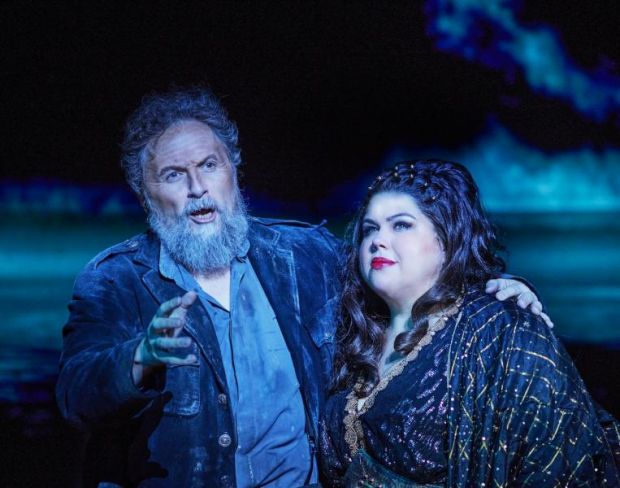
When Radamès returns, victorious, the Egyptian King offers Amneris to Radamès in marriage, leaving Amneris exultant and Aida miserable, a misery exacerbated by the fact that her father, Amonasro, is among the prisoners of war Radamès has captured.
Amonasro convinces Aida to get information about a further invasion from Radamès. When Radamès realises he has betrayed his country, he hands over his sword, is tried for treason and sentenced to be buried alive. Aida joins him in his tomb and, as they fade away, Amneris prays for Radamès.
It’s a sad story, embellished by beautiful music, especially the famous “Triumphal March” where the orchestra and the people of Egypt, and a massive fanfare of brass instruments, salute the victory and the Glory of the god Isis.
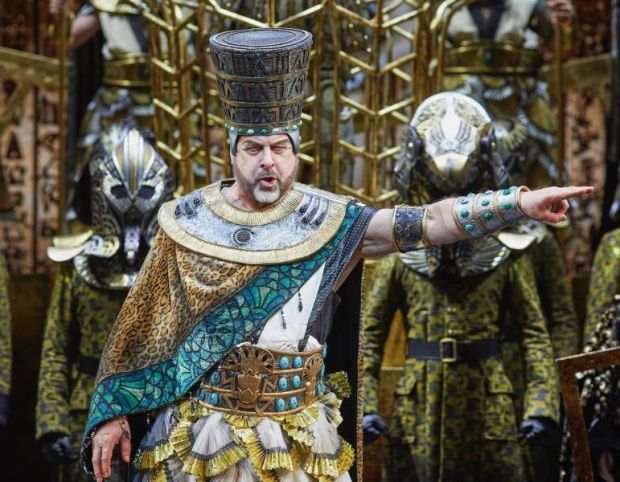
In this production, trumpets sound from the boxes in the auditorium as well as from the stage, making the victory even more triumphant.
Along with the wonder of the music and those who perform it, technology has inspired contemporary opera productions to become more and more spectacular. This production by director David Livermore is no exception. Livermore is renowned for his “high-tech sets that create impressive three-dimensional backdrops”, along with LED lighting effects and video projections. In Aida, he uses all of these impressively.
Metres high illuminated flats encase the stage or move across it. Projected images frame every scene – billowing red clouds, leaping yellow flames, metres high soldiers, tall, posed naked women, a giant black cat – rise above the action, a powerful example of modern theatricality juxtaposed with nineteenth century music and the Kingdom of Egypt in 2200 BC.
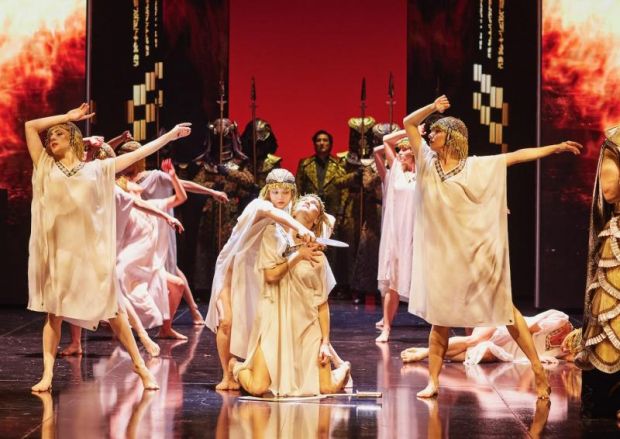
It is an impressive display – breath-taking at times – but it can become distracting!
The spectacle and movement – of the flats themselves and the images – though they fuse and blend with the tempo and emotion of the music and the voices, seem often to pull focus from the action … and Gianluca Falaschi’s incredible costumes.
Gold and turquoise, geometrical shapes, sparkling bejewelled gowns, gold and black battle dress, gold headdresses and helmets, a silver suit of armour. Gold and more gold! Shiny fabrics and lace strikingly fashioned into flowing skirts, cloaks and long embroidered coats.
Skimpy white fabrics worn by dancers who contort themselves before the gods. What creativity and imagination went into Falaschi’s designs! What fun those who made them must have had! What a thrill for those who wear them!
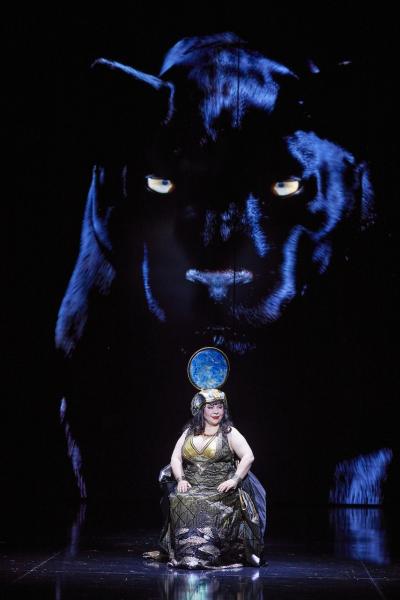
Leah Crocetto and Elena Gabouri grace some wonderful gowns as Aida and Amneris. Najmiddin Mavlyanov is resplendent in a gold embroidered coat as Radamès. Roberto Scandiuzzi shines in gold and silver vestments and a tall headdress as the priest Ramfis. David Parkin, as the King, is encased in silver and gold metallic armour, his face hidden behind a silver helmet as he stands regally on an intricate gold dais.
Soldiers and the court are similarly garbed, their costumes opulent and glittering – as are their voices as they wish Radamès and the army well – or welcome them victoriously home.
Crocetto and Gabouri, whether singing together in harmony, or alone, are spellbinding in their range and the powerful strength of their voices. Mavlyanov finds the loyal ambition and patriotism of Radamès in his solos – and both love and confusion in duets with Crocetto and Gabouri.
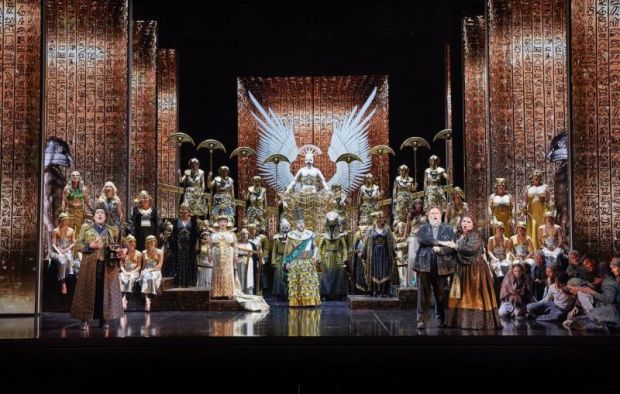
Parkin and Warwick Fyfe, who plays Amonasro, are great favourites with Sydney opera goers – and when they sing it is easy to see why.
Stuart Stratford conducts the hidden but superbly heard ninety musicians of the Opera Australia Orchestra – and the Off Stage Banda trumpets, trombones and tuba that herald the “Triumphal March”. Verdi’s music is magnificently glorious in their hands.
This production of Aida stuns with its theatrical innovation, its spectacular costumes – and with the power and operatic experience of its stellar cast. It is a production opera audiences will long remember.
Carol Wimmer
Photographer: Keith Saunders
Subscribe to our E-Newsletter, buy our latest print edition or find a Performing Arts book at Book Nook.

